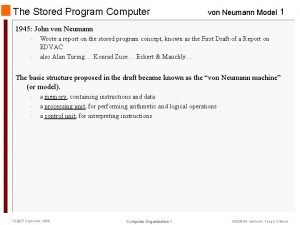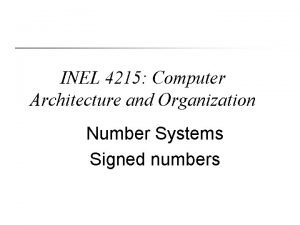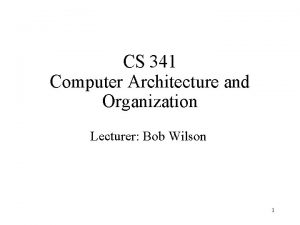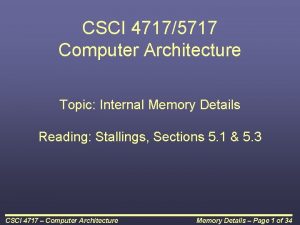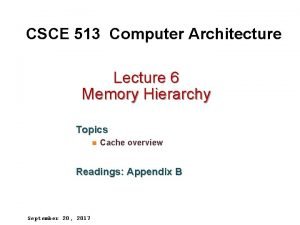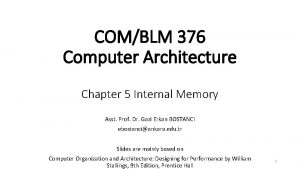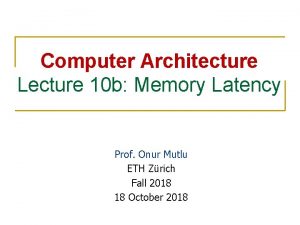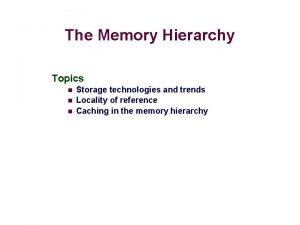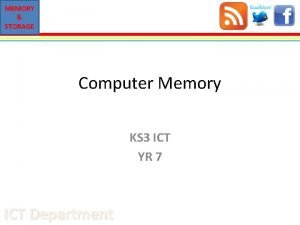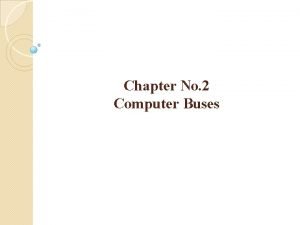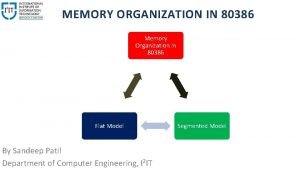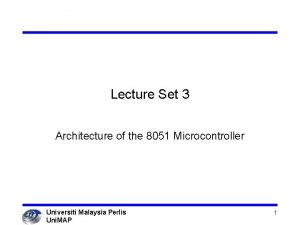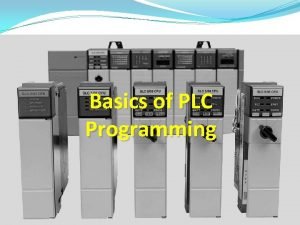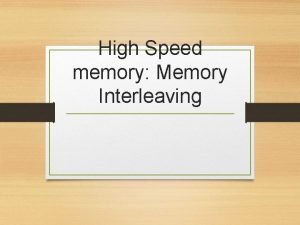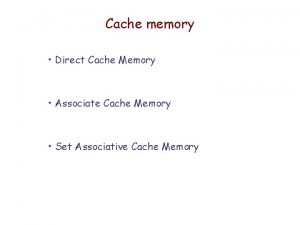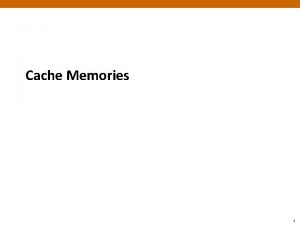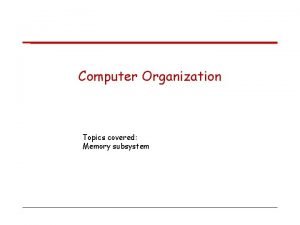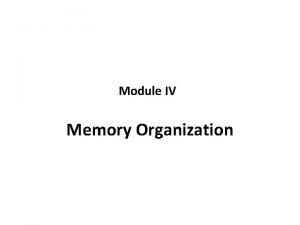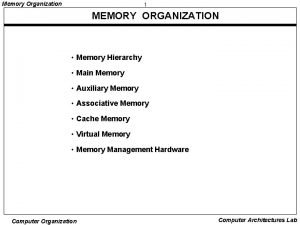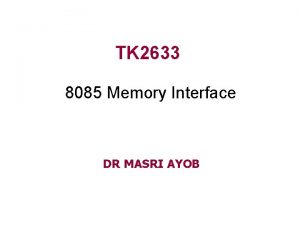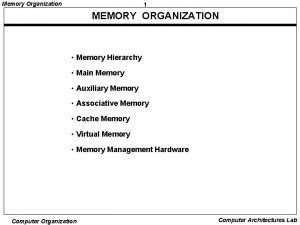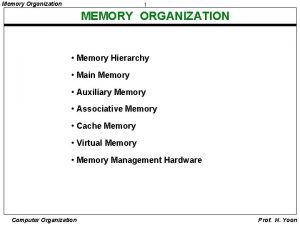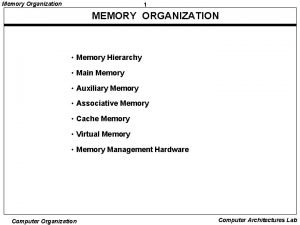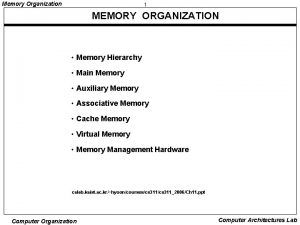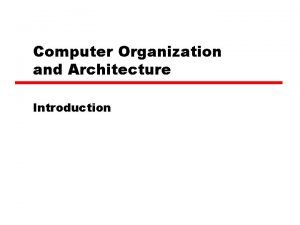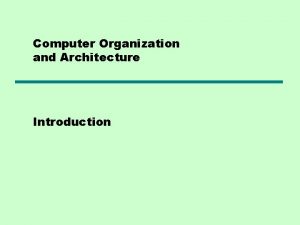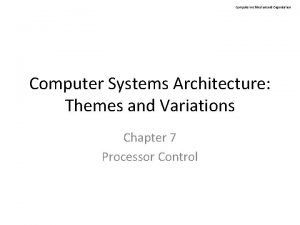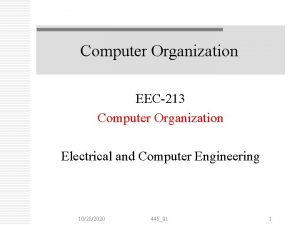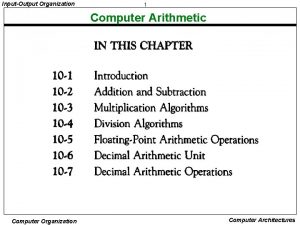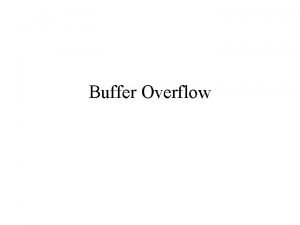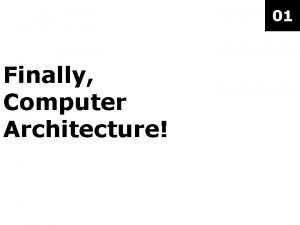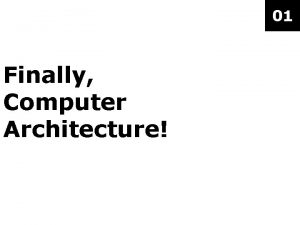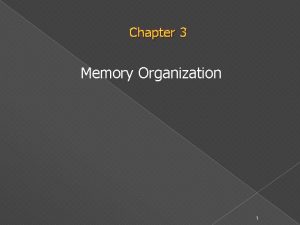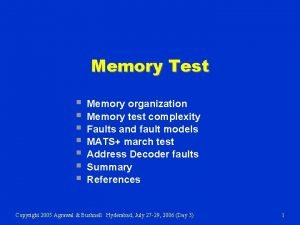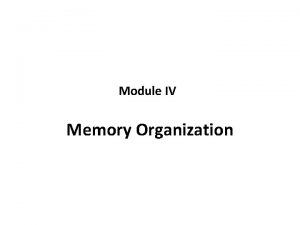Computer Architecture Memory organization Types of Memory l








































- Slides: 40

Computer Architecture Memory organization

Types of Memory l l Cache Memory • • Serves as a buffer for frequently accessed data Small High Cost RAM (Main Memory) • • • Stores programs and data that the computer needs when executing a program Dynamic RAM (DRAM) • • Uses Tiny Capacitors Needs to be recharged every few milliseconds to keep the stored data Static RAM (SRAM) • • Holds its data as long as the power is on D Flip Flop

Types of Memory (Cont. ) l l ROM • • Stores critical information necessary to operate the system. Hardwired can not be programmed Programmable Read Only Memory (PROM) • Can be programmed once using appropriate equipment Erasable PROM (EPROM) • • Can be programmed with special tool It has to be totally erased to be reprogrammed Electrical Erasable PROM (EEPROM) • • No special tools required Can erase a portion

Memory Hierarchy l The idea • • Hide the slower memory behind the fast memory Cost and performance play major roles in selecting the memory.

Hit Vs. Miss l l Hit • The requested data resides in a given level of memory. Miss • The requested data is not found in the given level of memory Hit rate • The percentage of memory accesses found in a given level of memory. Miss rate • The percentage of memory accesses not found in a given level of memory.

Hit Vs. Miss (Cont. ) l l Hit time • The time required to access the requested information in a given level of memory. Miss penalty • The time required to process a miss, • • Replacing a block in an upper level of memory, The additional time to deliver the requested data to the processor.

Miss Scenario l l l The processor sends a request to the cache for location X • • if found cache hit If not try next level When the location is found load the whole block into the cache • Hoping that the processor will access one of the neighbor locations next. • One miss may lead to multiple hits Locality Can we compute the average access time based on this memory Hierarchy?

Average Access Time l Assume a memory hierarchy with three levels (L 1, L 2, and L 3) h 1 hit at L 1 (1 -h 1) miss at L 1 t 1 L 1 access time l h 2 hit at L 2 (1 -h 2) miss at L 2 t 2 L 2 access time What is the memory average access time? h 3 hit at L 3=100% (1 -h 3) miss at L 3 t 3 L 3 access time

Locality of Reference l One miss may lead to multiple hits Locality l Temporal locality • l Spatial locality • l Recently accessed items tend to be accessed again in the near future. when a given address has been referenced, it is most likely that addresses near it will be referenced within a short period of time. (for example, as in arrays or loops). Sequential locality part of the spatial locality • Instructions tend to be accessed sequentially.

Cache memory l l Cache • Your home is the cache and the main memory is the grocery store • l Stores recently used data closer to the CPU Buy what is most probably to be needed in the coming week How a processor can know which block(s) to bring to the cache? • No way to know but can benefit from the locality concept

Impact of Temporal Locality l Assume that: • • l A loop instruction that is executed n times The request data created a cache miss requires tm to load the requested block from the main memory to the cache tc is the cache access time • What is the average access time? What does it mean? n tavg

Impact of Spatial Locality l Assume that: • m elements are requested due to spatial locality. • • l The request data created a cache miss that requires tm to load the requested block from the main memory to the cache tc is the cache access time What is the average access time? What does it mean? m tavg

Cache Mapping Schemes

Cache Mapping Schemes l Cache memory is smaller than the main memory l Only few blocks can be loaded at the cache l The cache does not use the same memory addresses l Which block in the cache is equivalent to which block in the memory? • The processor uses Memory Management Unit (MMU) to convert the requested memory address to a cache address

Direct Mapping l Assigns cache mappings using a modular approach j = i mod n l j cache block number i memory block number n number of cache blocks l l Cache Memory

Example l Given M memory blocks to be mapped to 10 cache blocks, show the direct mapping scheme? How do you know which block is currently in the cache?

Direct Mapping (Cont. ) l Bits in the main memory address are divided into three fields. l Word identifies specific word in the block l Block identifies a unique block in the cache l Tag identifies which block from the main memory currently in the cache

Example l Consider, for example, the case of a main memory consisting of 4 K blocks, a cache memory consisting of 128 blocks, and a block size of 16 words. Show the direct mapping and the main memory address format? Tag

Example (Cont. )

Direct Mapping l l Advantage • • • Easy Does not require any search technique to find a block in cache Replacement is a straight forward Disadvantages • • • Many blocks in MM are mapped to the same cache block We may have others empty in the cache Poor cache utilization

Group Activity l Consider, the case of a main memory consisting of 4 K blocks, a cache memory consisting of 8 blocks, and a block size of 4 words. Show the direct mapping and the main memory address format?

Group Activity l Given the following direct mapping chart, what is the cache and memory location required by the following addresses: 31 126 3 3 2 2

Fully Associative Mapping l Allowing any memory block to be placed anywhere in the cache l A search technique is required to find the block number in the tag field

Example l We have a main memory with 214 words , a cache with 16 blocks , and blocks is 8 words. How many tag & word fields bits? l Word field requires 3 bits l Tag field requires 11 bits 214 /8 = 2048 blocks

Which MM block in the cache? l Naïve Method: l CAM (Content Addressable Memory) • Tag fields are associated with each cache block • Compare tag field with tag entry in cache to check for hit. • • Words can be fetched on the basis of their contents, rather than on the basis of their addresses or locations. For example: • Find the addresses of all “Smiths” in Dallas.

Fully Associative Mapping l l Advantages • • Flexibility Utilizing the cache Disadvantage • • • Required tag search Associative search Parallel search Might require extra hardware unit to do the search Requires a replacement strategy if the cache is full Expensive

N-way Set Associative Mapping l l Combines direct and fully associative mapping The cache is divided into a set of blocks All sets are the same size Main memory blocks are mapped to a specific set based on : • • l s = i mod S s specific to which block i mapped S total number of sets Any coming block is assigned to any cache block inside the set

N-way Set Associative Mapping l Tag field uniquely identifies the targeted block within the determined set. l Word field identifies the element (word) within the block that is requested by the processor. l Set field identifies the set

N-way Set Associative Mapping

Group Activity l Compute three parameters (Word, Set, and Tag) for a memory system having the following specification: • Size of the main memory is 4 K blocks, • Size of the cache is 128 blocks, • The block size is 16 words. l Assume that the system uses 4 -way set-associative mapping.

Answer

N-way Set Associative Mapping l Advantages: • l Moderate utilization to the cache Disadvantage • Still needs a tag search inside the set

If the cache is full and there is a need for block replacement , Which one to replace?

Cache Replacement Policies l l l Random • • Simple Requires random generator First In First Out (FIFO) • • Replace the block that has been in the cache the longest Requires keeping track of the block lifetime Least Recently Used (LRU) • • Replace the one that has been used the least Requires keeping track of the block history

Cache Replacement Policies (Cont. ) l l Most Recently Used (MRU) • • Replace the one that has been used the most Requires keeping track of the block history Optimal • • Hypothetical Must know the future

Example l Consider the case of a 4 X 8 two-dimensional array of numbers, A. Assume that each number in the array occupies one word and that the array elements are stored column-major order in the main memory from location 1000 to location 1031. The cache consists of eight blocks each consisting of just two words. Assume also that whenever needed, LRU replacement policy is used. We would like to examine the changes in the cache if each of the direct mapping techniques is used as the following sequence of requests for the array elements are made by the processor:

Array elements in the main memory


Conclusion l l 16 cache miss No single hit 12 replacements Only 4 cache blocks are used

Group Activity l Do the same in case of fully and 4 -way set associative mappings ?
 Memory organisation in computer architecture
Memory organisation in computer architecture Architecture and organization difference
Architecture and organization difference Process organization in computer organization
Process organization in computer organization Neumann dst
Neumann dst Computer organization and architecture 10th solution
Computer organization and architecture 10th solution Computer architecture lab experiments
Computer architecture lab experiments Introduction to computer organization and architecture
Introduction to computer organization and architecture Bus architecture in computer architecture
Bus architecture in computer architecture Spec rating formula in computer organization
Spec rating formula in computer organization Computer organization and architecture 10th edition
Computer organization and architecture 10th edition Computer arithmetic
Computer arithmetic Computer organization and architecture definition
Computer organization and architecture definition Computer architecture and organization
Computer architecture and organization Computer architecture and organization
Computer architecture and organization Instruction set architecture in computer organization
Instruction set architecture in computer organization Basic structure of computer system
Basic structure of computer system Complete computer description in computer organization
Complete computer description in computer organization Design of basic computer
Design of basic computer Memory system design in computer architecture
Memory system design in computer architecture Explain virtual memory in computer architecture
Explain virtual memory in computer architecture Memory hierarchy in computer architecture
Memory hierarchy in computer architecture Advanced dram organization
Advanced dram organization Computer memory hierarchy
Computer memory hierarchy Internal memory in computer architecture
Internal memory in computer architecture Memory latency in computer architecture
Memory latency in computer architecture Emerging memory technologies
Emerging memory technologies Computer memory hierarchy
Computer memory hierarchy Two types of computer memory
Two types of computer memory Instruction set architecture
Instruction set architecture Types of buses in computer architecture
Types of buses in computer architecture Block organization
Block organization Memory organization of 80386 microprocessor
Memory organization of 80386 microprocessor Internal memory organization of 8051 microcontroller
Internal memory organization of 8051 microcontroller The memory organization of a plc is often called
The memory organization of a plc is often called Advantages of memory interleaving
Advantages of memory interleaving Cache operation
Cache operation Cache memory organization
Cache memory organization Semiconductor ram memories in computer organization
Semiconductor ram memories in computer organization Virtual memory organization
Virtual memory organization What is memory organization
What is memory organization Memory organization of 8085
Memory organization of 8085



